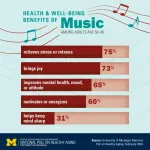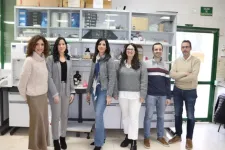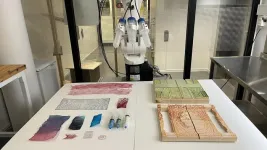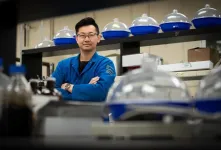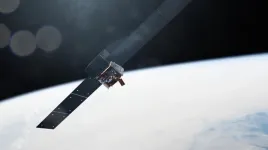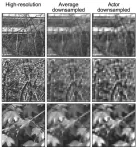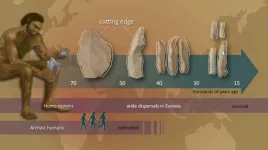(Press-News.org) A more accurate way of identifying underground nuclear tests, including those conducted in secret, has been developed by researchers at The Australian National University (ANU).
The new method could help international observers better identify tests carried out by countries or actors known to possess nuclear weapons, as well as providing new information about those suspected of being armed.
According to lead author Dr Mark Hoggard, in the aftermath of the Cuban Missile Crisis and Partial Test Ban Treaty in the 1960s, testing of nuclear weapons moved underground.
While this eliminated some risks associated with contamination by radioactive fallout, underground tests still generate a huge amount of seismic energy.
“The explosion goes off and you have all this energy that radiates out, which can be measured on seismometers,” Dr Hoggard said.
“So, the science problem becomes how do we tell the difference between that and a naturally occurring earthquake?”
There has been renewed attention on the issue since some existing methods failed to correctly classify a 2017 underground nuclear test by North Korea.
“By using some revised mathematics and more advanced statistical treatment, we have managed to improve the classification success rate from 82 per cent to 99 per cent for a series of 140 known explosions from the US,” Dr Hoggard said.
“Nuclear testing in the US has largely been carried out in Nevada – in the desert – and there is a thorough seismic record of all those tests, so it provides a really helpful dataset.
“Our new method also successfully identifies all six of the tests conducted in North Korea from 2006 to 2017.”
Dr Hoggard said there may well still be instances of underground nuclear tests being carried out surreptitiously in some parts of the world, and the sheer volume of earthquakes makes it difficult to investigate each event to determine if it is suspicious or not.
“This makes effective methods like ours all the more important,” Dr Hoggard said.
“Another positive aspect of our method is that it doesn't require any new kit. You don't have to put up new satellites or anything like that, we're just using standard seismic data.
“It's also pretty fast, so it's more or less suitable for real-time monitoring.”
The research has been published in Geophysical Journal International.
END
New method to more accurately spot underground nuclear tests
2024-02-07
ELSE PRESS RELEASES FROM THIS DATE:
More than half million dollars in research grants awarded to understand No. 1 birth defect
2024-02-07
DALLAS, Feb. 6, 2024 — Five promising scientific researchers will advance their work to better understand and treat the most common birth defect in the U.S., congenital heart defects (CHDs), thanks to joint financial support from the American Heart Association and The Children’s Heart Foundation's Congenital Heart Defect Research Awards program.
To date, the American Heart Association, celebrating 100 years of lifesaving service and devoted to a world of healthier lives for all, and The Children’s Heart Foundation, dedicated to funding congenital heart defect research, have ...
Rice’s Santiago Segarra wins NSF CAREER Award
2024-02-07
HOUSTON – (Feb. 7, 2024) – Artificial intelligence is good at many tasks involving data in the form of text, audio and images, including face recognition and text summarization.
“AI is an amazing tool and has been extended over less conventional domains, such as climate data defined on spheres (representing the Earth) and traffic data defined on road networks,” said Santiago Segarra, assistant professor of electrical and computer engineering and statistics.
With his five-year, $599,138 CAREER Award from the National Science Foundation, Segarra intends to study the use of graphs to represent these ...
Music may bring health benefits for older adults, poll suggests
2024-02-07
Whether it’s singing in a choir, playing the living room piano, joining in hymns at church, or just whistling along with the radio, a new poll finds that nearly all older adults say music brings them far more than just entertainment.
Three-quarters of people age 50 to 80 say music helps them relieve stress or relax and 65% say it helps their mental health or mood, according to the new results from the University of Michigan National Poll on Healthy Aging. Meanwhile, 60% say they get energized or motivated ...
From waste to resource: A new and sustainable process transforms sewage sludge into activated carbon
2024-02-07
Sewage sludge is the solid waste resulting from wastewater treatment. According to data from the Ministry for the Ecological Transition and the Demographic Challenge, 1.2 million tons of this waste were produced in Spain in 2021 alone, and its management is a growing problem. Although some of it may have agricultural applications, such as being used as fertilizer after composting, its high concentration of metals limits its use, generating environmental problems.
A new study has managed to give this waste a second life, turning it into activated carbon, a product boasting ...
Incheon National University researcher examines proactive change-oriented behaviors by public service providers
2024-02-07
Although change-oriented behaviors are critical to high quality public service delivery, encouraging employees to embrace and pursue change in the public sector is difficult. Even with sufficient job autonomy–the principal antidote to resistance to change in the public sector literature–public servants may still lack the incentives, skills, information, and sense of security necessary to engage in proactive change-oriented behavior. Consequently, while job autonomy is undoubtedly important, it alone is not enough, as demonstrated by the many cases in which autonomy fails to lead to change and work process improvements. Given the importance of attitudes ...
3D printed nanocellulose upscaled for green architectural applications
2024-02-07
For the first time, a hydrogel material made of nanocellulose and algae has been tested as an alternative, greener architectural material. The study, from Chalmers University of Technology in Sweden and the Wallenberg Wood Science Center, shows how the abundant sustainable material can be 3D printed into a wide array of architectural components, using much less energy than conventional construction methods.
The construction industry today consumes 50 percent of the world’s fossil resources, generates 40 percent of global waste and causes 39 percent of global carbon dioxide emissions. There is a growing line of research into biomaterials and their applications, in ...
Inexpensive, carbon-neutral biofuels are finally possible
2024-02-07
When it comes to making fuel from plants, the first step has always been the hardest — breaking down the plant matter. A new study finds that introducing a simple, renewable chemical to the pretreatment step can finally make next-generation biofuel production both cost-effective and carbon neutral.
For biofuels to compete with petroleum, biorefinery operations must be designed to better utilize lignin. Lignin is one of the main components of plant cell walls. It provides plants with greater structural integrity and resiliency from microbial attacks. However, these natural properties of lignin also make it difficult to extract and utilize ...
Will this new solar maximum solve the puzzle of the Sun’s gamma-ray picture?
2024-02-07
The Sun’s polar regions were the most active emitting high energy radiation during the previous solar maximum, an imbalance yet to be explained, and reported for the first time in a study led by a researcher of the Faculty of Sciences of the University of Lisbon (Ciências ULisboa) (Portugal).
The Sun shines brightly in the visible light, but how does it look like at the highest energies of the electromagnetic radiation? The Sun’s picture taken in gamma rays is a deadly sight, luckily blinded by the Earth’s atmosphere and only seen from space. Each photon carries a billion times more energy than its ultraviolet sibling. How does the Sun’s regular gamma rays’ ...
A machine learning framework that encodes images like a retina
2024-02-07
A major challenge to developing better neural prostheses is sensory encoding: transforming information captured from the environment by sensors into neural signals that can be interpreted by the nervous system. But because the number of electrodes in a prosthesis is limited, this environmental input must be reduced in some way, while still preserving the quality of the data that is transmitted to the brain.
Demetri Psaltis (Optics Lab) and Christophe Moser (Laboratory of Applied Photonics Devices) collaborated with Diego Ghezzi of the Hôpital ophtalmique Jules-Gonin – Fondation Asile des Aveugles (previously Medtronic Chair in Neuroengineering at EPFL) to apply machine ...
Innovation in stone tool technology involved multiple stages at the time of modern human dispersals
2024-02-07
A study led by researchers at the Nagoya University Museum in Japan may change how we understand the cultural evolution of Homo sapiens at the time of their dispersal across Eurasia about 50,000 to 40,000 years ago. These findings challenge traditional beliefs about the timing and nature of cultural transitions during this critical period in human history.
Published in Nature Communications, the researchers’ insights into stone tool technology suggest that the commonly held view of a ‘revolution’ in culture and technology that allowed anatomically modern humans to outcompete ...

